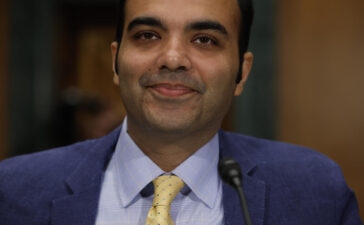Reaching net zero is a costly undertaking. But Amine Benayad, BCG’s global lead for climate and sustainability in the Financial Institutions practice, says that money alone is not the answer. Governments, financial institutions, NGOs, and other financiers also need to shift their approach and mindset. They need faster decision making, a firmer understanding of and willingness to absorb risk, and a greater recognition of nature’s effect on business continuity.
BCG: Only half of the $37 trillion in investments needed by 2030 to meet net zero goals has been committed. Where can we expect the rest to come from? How do we close the gap?
Amine Benayad: For me the question is not where we can get the money. The money can come from philanthropy, governments, development finance institutions, multilateral development banks, corporates, banks, and investors. The math works on paper.
The question is: how can we make money flow to where it is needed at the right speed, in the right amount, and at the right time?
If you talk to executives at financial institutions, they will say, “We’re ready to put money on the table, but we don’t see enough bankable projects.”
If you talk to project developers, they will tell you, “We have a thousand bankable projects, and we can’t find the money.”
We need to fix things along the value chain. We need more projects that are well conceived and well developed. We need to upscale our ability to build high-quality projects from an infrastructure, engineering, and risk management perspective.
Development finance institutions and multilateral development banks have a role to play. Some of them are set up to manage these risks.
Banks also need to start looking at the economics through a different lens. We tend to compare financing opportunities to other alternatives today. That is the wrong comparison. The cost of inaction is not zero. It’s very high.
Finally, governments need to put in place the carrots and sticks that move not just one company or one project but the entire economy. The Inflation Reduction Act in the US is a great example. So is the Carbon Border Adjustment Mechanism in the EU. These types of moves by governments can have extensive ripple effects.
If you could wave a magic wand and fix one or two things about concessionary, catalytic, or other nontraditional types of climate financing, what would it be?
I would make sure that we have enough skilled people in the Global South, where we must deal with both adaptation and mitigation to build quality projects.
I would also simplify the governance and processes within multilateral development banks, development finance institutions, and even commercial banks. We don’t want processes that require five years to complete. I used to work at a commercial bank, and some of the decisions took us three years. We cannot afford that anymore.
What types of financial collaboration or innovation could help to ensure that lower- and middle-income nations receive adequate investment and funding?
Let’s use an example: a green hydrogen project in Africa. Investors—typically banks from the Global North—will look at the geography. They may think the technology is not 100% mature, so there is a technology risk. They will think about risk around the country, the region, and the currency. They are much more comfortable with dollar and euro risk than with risk associated with African currencies.
Players like the African Development Bank, International Finance Corporation, or philanthropic organizations can come in and assume currency exchange risk or other early risks. This is patient or catalytic money in which returns of 0% to 5% are acceptable.
With the early risks taken care of, the project will be much more mature, and the returns will become more interesting to a commercial bank.
There are also creative forms of debt swaps, especially for middle-income countries, which technically don’t qualify for concessionary financing. These countries are struggling to finance the climate transition at current interest rates. Debt-for-nature swaps could be a promising instrument in such cases.
What challenges do banks face in assessing their exposure to climate risk?
The first challenge is awareness. Banks are not fully aware of their climate risks. We tend to think in terms of 2030 or 2050, but some physical risks are already here. Banks are financing farmers who are already experiencing hydric stress. Some of these loans won’t be paid back in the next five-plus years.
The second is a data challenge. Imagine that you’re a bank looking to finance projects and assets in the power sector. You need to know the physical assets of your client. Where are they? Not every location is exposed to droughts or heat in the same way. You need to understand the technology used in the power plants. You need to know the level of production. So it all comes down to data—and using that data to translate climate data into financial impacts.
How can the financial sector fund nature-related interventions and identify opportunities that come from addressing challenges related to nature?
Nature today is probably where carbon was eight years ago. Some of the questions I’m hearing are: Where is the business opportunity? Can we as commercial banks make money while reducing our impact and protecting the planet? If you look at nature in isolation, often there are no revenues, let alone profits, today.
But if you look at a bigger picture—how can we reinforce and ensure the continuity of our business when we are running out of freshwater—the small nature problem becomes part of a much bigger puzzle with high business stakes.
It really comes down to defining the right problem to solve. Rather than operating in silos and solving niche problems, we need to link the nature problems to bigger industrial- and human-activity–linked problems. Interventions that address business continuity and issues linked to water are becoming more economically viable.
You are talking about a shift in mindset. Why isn’t this happening given all the developments we read about in newspapers and see on TV?
It is happening, but not at the right speed or scale.
The incentive schemes, the KPIs, and the lenses that we use to look at the world are not always aligned with the urgency of the crisis and with the fact that what we do today will pay off in ten to fifteen years. Fifteen years is like infinite time for corporates.
We’re focusing in this discussion on E in ESG. It’s all about the environment. But the story does not end there. The S, social impact, is not always 100% aligned with the E. We need to better understand the just transition and support local communities and workers. If you are a corporation or a bank, you need to carefully manage two societal roles: protecting climate, the environment, and nature and promoting a just transition.
Subscribe to our Climate Change and Sustainability E-Alert.
















